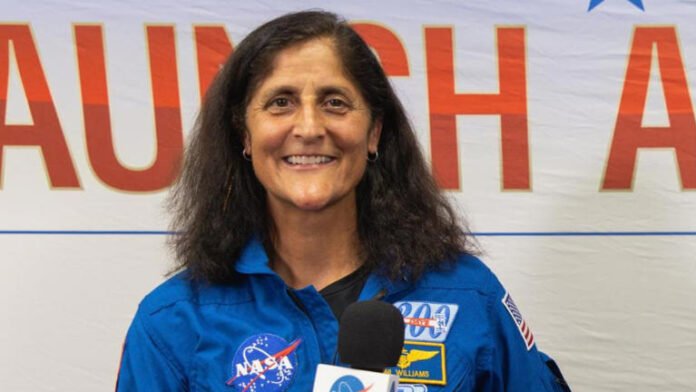NASA astronaut Sunita Williams is set to remain in space for an additional four months, despite the arrival of a planned rescue mission. Williams, a veteran spacefarer, has been aboard the International Space Station (ISS) as part of an extended mission, but recent technical and logistical challenges have reshaped the course of her stay.
This news comes in light of the arrival of a rescue mission, which was initially dispatched to bring her and other astronauts back to Earth. However, due to complex factors related to both the ISS and NASA’s evolving objectives in space, the decision was made for Williams to continue her mission. Here’s an in-depth look at the reasons behind this decision.
The Rescue Mission’s Arrival: What Happened?
The rescue mission was launched as part of a standard operational procedure to return astronauts safely back to Earth after extended durations in space. The plan involved rotating crew members and performing crucial maintenance on the ISS. However, upon the rescue mission’s arrival, mission control assessed the situation aboard the station and made a surprising announcement: Williams would remain on the ISS for four more months.
Initial speculation arose over potential technical issues with the return spacecraft, such as system malfunctions or concerns about the conditions for re-entry. However, NASA officials have clarified that the spacecraft is fully operational and capable of returning astronauts safely to Earth. This decision was not driven by any immediate technical failures, but by strategic mission factors.
The Strategic Extension: A NASA Decision
According to NASA officials, the decision to extend Sunita Williams’ stay is a strategic one, linked to several mission-critical reasons.
- Scientific Priorities: The ongoing scientific research aboard the ISS has taken precedence over the routine crew rotations. Williams is currently involved in several key experiments, including research on microgravity’s effects on human biology, new materials testing, and investigations into the viability of long-term space habitation. Her extensive experience in spaceflight, combined with her familiarity with the ISS systems, makes her uniquely qualified to oversee these experiments, which require extended observation and fine-tuning.With four more months added to her tenure, Williams will be able to contribute crucial data to studies that could impact the future of space travel. Some experiments cannot be easily paused and require continuous monitoring, which is why NASA decided to keep an experienced astronaut like Williams in place rather than interrupting the flow of research by bringing in someone new.
- Logistical Coordination: Another factor influencing the decision is the need for logistical flexibility. NASA and its international partners, including the European Space Agency (ESA) and Roscosmos, are balancing tight schedules for upcoming launches and spacecraft availability. A sudden crew rotation could strain the delicate balance of space operations, leading to delays in both scientific research and station maintenance. Given this, keeping Williams on the ISS for a longer period provides NASA with the opportunity to manage its resources more effectively.
- Preparing for Future Deep-Space Missions: NASA’s long-term goals include preparing astronauts for missions to the Moon under the Artemis program and, eventually, for crewed missions to Mars. Prolonged stays in space are part of this training, as astronauts will need to endure long-duration missions in harsh space environments. Sunita Williams’ extended mission could serve as a valuable real-time test for understanding how astronauts cope physically and mentally with even longer space assignments. The insights gained from her experience could help shape the protocols for future deep-space exploration.
Williams’ Expertise and Endurance
Williams, who has logged more than 322 days in space across previous missions, is no stranger to the rigors of space travel. As one of NASA’s most experienced astronauts, she brings a wealth of knowledge that is indispensable in managing both day-to-day operations on the ISS and more specialized scientific tasks. Her leadership in space, combined with her technical know-how, makes her an asset to the mission’s success.
In a statement to the public, Williams expressed confidence in NASA’s decision and reaffirmed her commitment to the mission. “Space is an environment that constantly challenges us to adapt and innovate,” she said. “I’m excited to continue working on experiments that could pave the way for humanity’s future in space.”
What’s Next for Williams?
For the next four months, Williams will play a crucial role in managing the ISS’s ongoing projects and maintaining its systems. She will also continue to provide valuable feedback on the effects of extended spaceflight, which will be critical as NASA works toward its ambitious deep-space goals.
While the rescue mission may have arrived as planned, the decision to keep Sunita Williams in space exemplifies NASA’s evolving priorities and adaptability in the dynamic environment of space exploration. Her continued presence aboard the ISS highlights the importance of long-term scientific research and the vital role that experienced astronauts play in pushing the boundaries of human knowledge and endurance in space.

